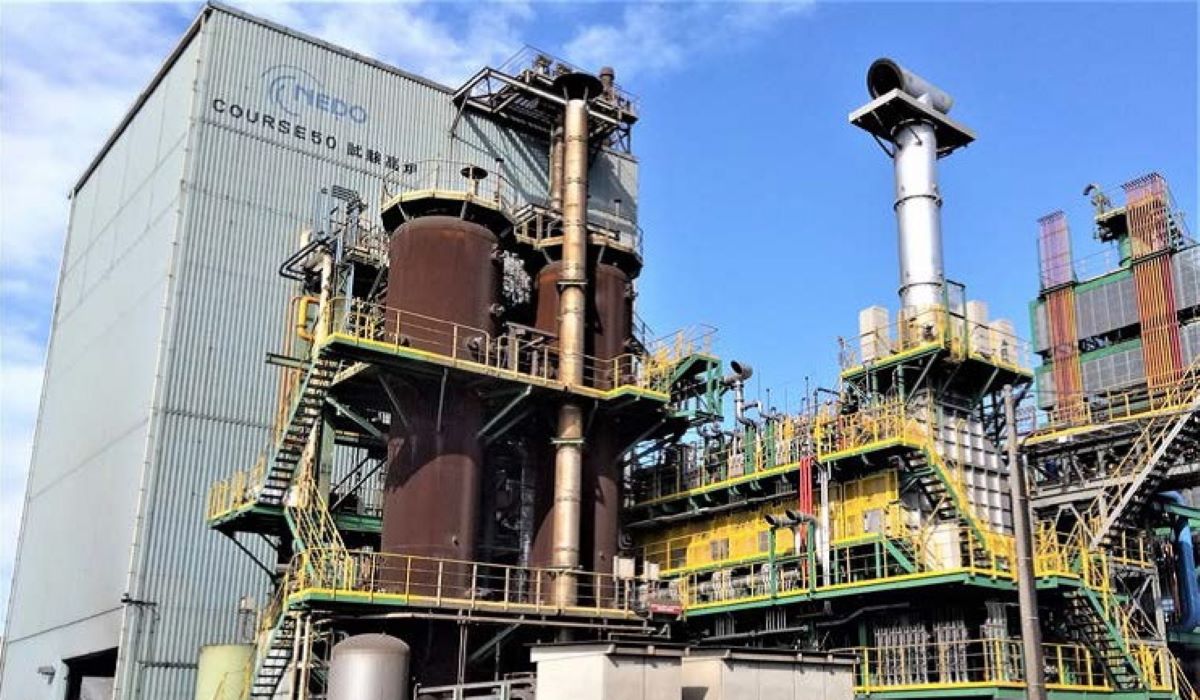 Test blast furnace of NEDO's Green Innovation Fund project on hydrogen utilization in steelmaking at Nippon Steel's Kimitsu Steel Works. (Photo provided by NEDO)
Test blast furnace of NEDO's Green Innovation Fund project on hydrogen utilization in steelmaking at Nippon Steel's Kimitsu Steel Works. (Photo provided by NEDO)In the next-generation technology, hydrogen plays the role of coal. At its test facility, Nippon Steel has achieved 33% less emissions, the world's highest emissions reduction for steelmaking.
Temperature Control Is KeyThe technology being developed is called hydrogen reduction for blast furnaces. It is part of a research project promoted by the New Energy and Industrial Technology Development Organization (NEDO) using the government's Green Innovation Fund. Nippon Steel is taking the lead on the initiative.
Blast furnaces produce steel on a large scale using iron ore as raw material. High temperatures can reach up to 1,500 degrees Celsius. Reduction using coal can be continuously performed alongside iron melting due to the exothermic reaction of heat generation that releases heat.
On the other hand, hydrogen reduction is an endothermic reaction that absorbs heat. This causes the temperature in the blast furnace to drop, meaning reduction and iron melting are not continuous.